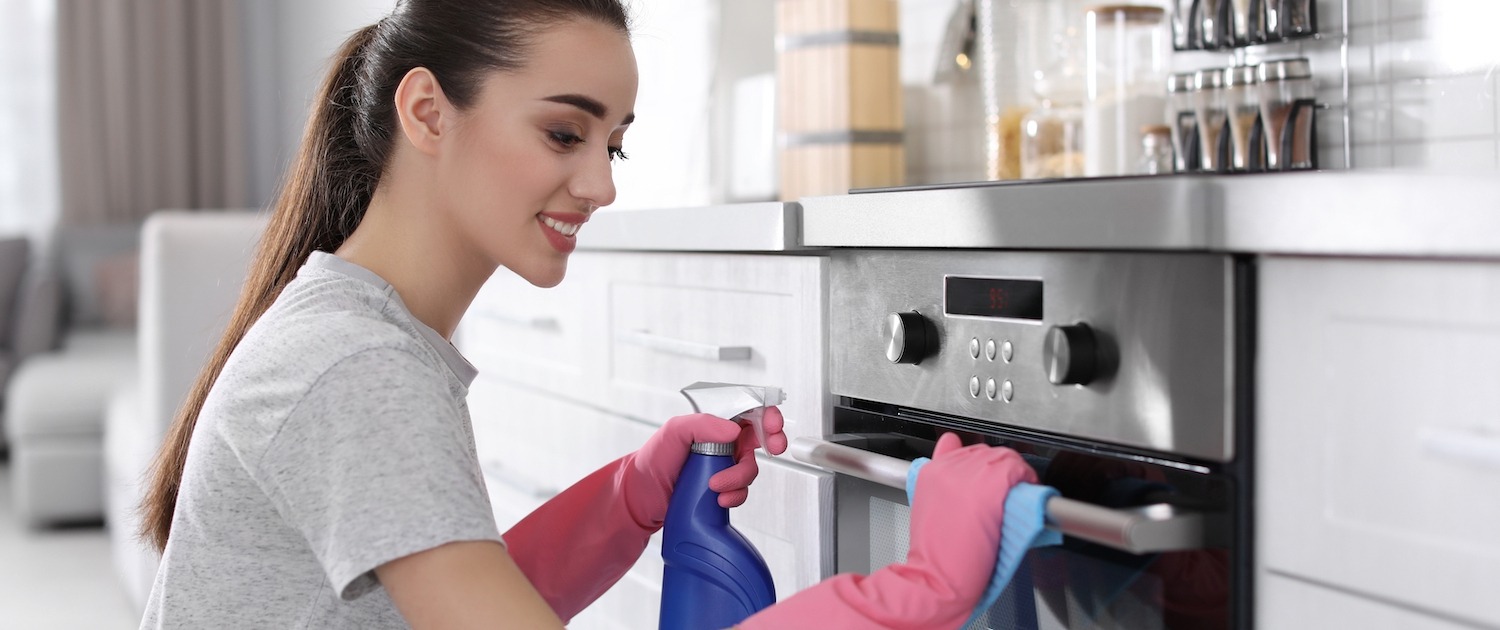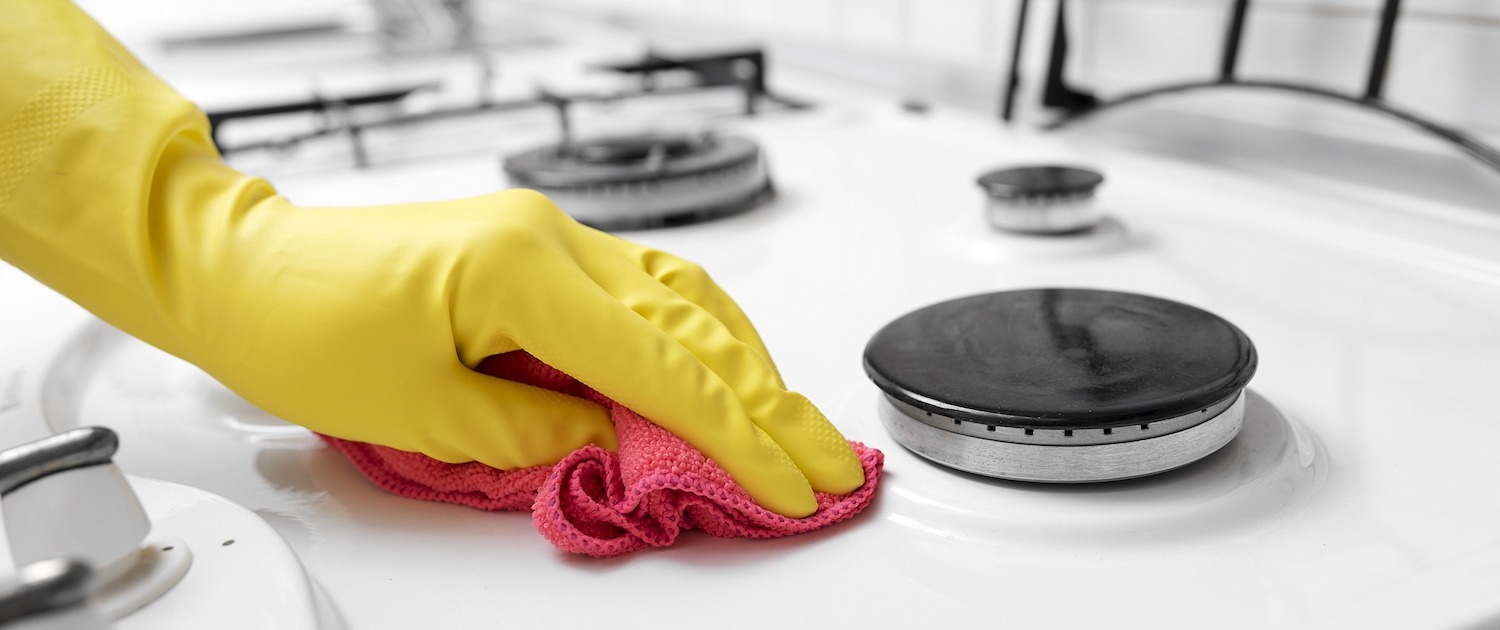10 Tips and Tricks to Clean Your Appliances
APP Expert / Thursday January 20, 2022
Between splattered sauces and spilled oil, your kitchen can get gross pretty quick – don’t worry, it happens to everyone. Cleaning it all can seem pretty daunting, but there are ways to make each task a whole lot easier. In this article, we’re setting you up with 10 quick tips to get your kitchen looking as clean as a magazine spread.
Ready to spruce up your appliances? Let’s go!
Need a part to fix an appliance problem yourself? Search below with your appliance’s model number to find the perfect part:
Whether you’re doing a deep clean on your dishwasher or scrubbing your oven’s walls, we’ve got tips that are broadly applicable to keeping all of your appliances clean. You will also find more tips below for specific appliance types.
- Keep a regular cleaning schedule.
It may seem like a pain, but keeping a regular schedule for cleaning your appliances will make those time consuming deep cleans less necessary, and they’ll help to extend the life of your appliances by getting rid of gunk. You’ll stave off rust and corrosion by keeping your appliances clean. - Don’t spray cleaner on the appliance directly.
If you do, you risk moisture reaching your appliance’s electrical components and shorting them out. Instead, spray your cleaner onto a cleaning cloth or paper towel and then wipe surfaces down. - When you’re cleaning stainless steel, wipe in the direction of the steel’s grain.
To keep your stainless steel appliances looking pretty, don’t wipe in a circular motion. By following the grain, you’ll avoid leaving behind streaks when you’re picking up those inevitable fingerprints and water stains. - Baking soda and vinegar combined will only work in certain situations.
Together, they aren’t an all purpose cleaner–they’re actually closer to plain water. Baking soda and vinegar foam up when combined, and that foaming action can do some good, but once the foam is done, you’re basically just left with salty water.Use baking soda and vinegar together to break up caked on debris, preferably only when you can apply them both directly to the thing you’re trying to clean. For example, to dislodge gunk in your garbage disposal.
Depending on what you’re trying to clean, you’ll likely have better luck using water mixed with either vinegar or baking soda – not both – or a specialty cleanser made specifically for cleaning kitchens and appliances.
Tips for Specific Appliances: Next, we’re looking at specific ideas to get your kitchen appliances clean.
- Use vinegar steam to loosen crud inside your microwave.
If your microwave’s interior is giving you horror movie vibes, you can do some prep so that it’s a little easier to wipe it all down. Pour some white vinegar into a microwave safe cup or bowl, then microwave it for around 3 minutes. Once it’s done, take the bowl out and set it aside – Careful! It’ll be hot! Say good-bye to those stuck on soup and other stains, the steam created by the vinegar as it heats will loosen any grime on the inside making it much easier to clean everything with a damp sponge or cloth. - Ammonia will get gas cooktop grates looking like new.
Dirty gas stove grates? You can get them looking brand new in an afternoon with almost no work on your part. To do this, you’ll just need some ammonia cleaner and freezer bags. Make sure you wear chemical resistant gloves when handling ammonia, work in a well ventilated area, and never, ever mix it with bleach.Now, here’s how to get your stove grates looking great: Put each grate in a freezer bag with three tablespoons of ammonia. Then seal the bags to keep fumes contained, and set them aside in a tub or sink. Make sure they’re well out of the reach of children and pets. After five hours, remove the grates and rinse them off. At most, you may need to do a bit of light scrubbing with soapy water, and they’ll look brand new again!Thoroughly rinse the grates to make sure no ammonia residue is left behind, and let them dry completely before you use them again.
- Clean your range as you cook.
Sure, it sounds like more trouble than it’s worth, especially when you’ve just finished managing a simmering skillet and two boiling pots, but cleaning up spills and splatters quickly will reduce the risk that they’ll be baked into your cooktop. Baked-on stains don’t just make for bad smells as your stove heats up, they can also damage your range’s components, causing rust on metal parts and cracks in glass surfaces. Don’t let those messes sit for longer than they need to!
- The best offense is a good defense – prevent oven stains by preparing for them!
Put a baking sheet (not foil!) down on a lower rack in your oven when you’re roasting or baking something that might spill over – and, really, that’s just about everything, whether it’s pizza night or cupcakes for your kid’s a bake sale. The baking sheet will catch overflow, and it’s way easier to clean than the oven itself. - Use glass top cleaner like Affresh to get a stubbornly dirty glass oven door really clean.
If your oven’s glass door is dirty on the inside even after other cleaning attempts, try this:
When the glass is completely cool (don’t try to clean the oven glass while it’s hot!), apply a thin layer of glass top cleaner to the interior door glass. Glass top cleaner is a cleaner made for glass cooktops, so you may have some already. Allow the cleaner to dry completely. You’ll be able to scrape the leftover film off easily with the flat edge of a straight-edge razor blade, and it’ll take those stuck-on stains with it. - Clean your range’s control knobs.
Did you know that removing your range’s control knobs is as easy as just gently pulling them away from the control panel? Go ahead and pull those knobs off your stove and see just how much gunk is built up back there!
A Deeper Look At Deep Cleaning Appliances
We here at AppliancePartsPros.com want to help you keep your appliances in tip-top shape, whether that means repairing them or getting them sparkling clean. We’ve set you up with some helpful tips, but if you’re looking for more advice on getting your appliances looking good, here are just a few of our how-to cleaning guides:
- How To Clean An Oven
- How To Fix A Washing Machine That Smells Bad
- How To Clean A Garbage Disposal
- How To Clean Refrigerator Coils
- How To Clean A Glass Stovetop
Finding what you need so far? There’s still a whole lot more! Check out our blog and our YouTube channel for even more tutorials, from cleaning to home appliance repair. Keep AppliancePartsPros.com in mind the next time you need genuine OEM parts, advice, or do-it-yourself guides for appliance repairs. Our friendly staff is happy to help you fix your appliances (or keep them clean) yourself!
Hi! I’m Matt H., and I’m thrilled to be your guide through the world of appliance repair with over 25 years of invaluable experience in the industry.
From the early days of my career, I have been deeply passionate about appliances and their inner workings. Over the years, I’ve seen it all – from vintage models to the latest cutting-edge technology – and I’ve dedicated myself to mastering the art of repair. With a toolbox in one hand and a wealth of knowledge in the other, I’ve tackled every challenge that has come my way, learning and growing with each repair.
Join me as we dive into the intricacies of appliance repair. From step-by-step repair guides to explanations of common problems and their solutions, I’ll be here to simplify the repair process and empower you with the knowledge you need to keep your appliances running smoothly.
Feel free to explore our blog, ask questions, and leave comments – this platform is a space for learning, sharing, and growing together. Let’s work together to ensure that your appliances continue to serve you for years to come.
Thank you for joining me on this journey, and I look forward to being your go-to resource for all things related to appliance repair!



